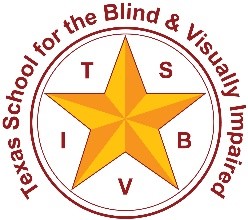Food

Tactile symbols representing food are made with oval-shaped poster board that has been laminated. The backing material could be changed if necessary using materials such as foil, contact paper, or thin foam sheeting material, although in these examples none is used. The shape is the most important, but the backing can vary depending on what materials you have and what the child can tactually discriminate.
Note: These symbols are the ones utilized at Texas School for the Blind and Visually Impaired, so they reflect that social environment. You may need to create symbols or adapt symbols specific to the environment of the student.
If you are starting from scratch with a symbol, try to pick something that will make sense to the student. As you look at the symbols you will see that some are based on visual information and some on possible tactile information. It is important to consider the individual’s perspective when creating the symbol. These symbols are highly abstract so it is important to note his/her visual and tactile access when designing the symbol. A part or a piece of an object often works. By necessity, however, some symbols have to be arbitrary, because there is no obvious item to place on the symbol. When that’s the case, the student will learn the meaning through repeated association.
Shape: oval-shaped
Background: laminated poster board
Meals




Beverages












Breads, Grains, Cereal, and Starches























Condiments, Spices and Spreads















Dairy






Desserts










Fruits














Entrees, Fish, Meat and other Proteins

























Vegetables
















